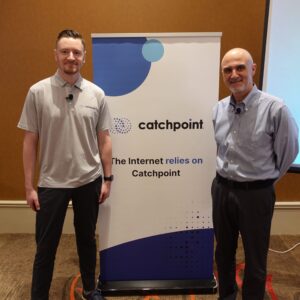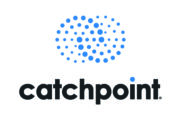|
|
 Brandon DeLap and Mehdi Daoudi Presented for Catchpoint at AppDev Field Day 1 |
Who is Catchpoint and What Do We Do?
Watch on YouTube
Watch on Vimeo
Listen as Mehdi Daoudi talks through their humble beginnings and the origin of the need for Internet Performance Monitoring (IPM). Mehdi elaborates on the pervasive nature of digital experiences and how they are shaped by the world’s biggest brands. The presentation then posits the criticality of The Internet as your new application infrastructure before continuing to explain both the limitations of traditional Application Performance Monitoring (APM) and how IPM is purpose built to give deeper visibility into The Internet Stack – where agent-based APM has no reach. These critical points are catalyzed by a discrete explanation of The Internet Stack versus the application stack before asking a critical question: “What are you prepared to lose?” when Internet outages occur.
Personnel: Mehdi Daoudi
Catchpoint Platform, Solution, and Product Overview
Watch on YouTube
Watch on Vimeo
Mehdi talks through the escalator construct of how Catchpoint’s unique monitoring and observability telemetry are foundational to mitigating incident impact and providing businesses with a resilient internet. The Catchpoint IPM Platform offers five experience-based solutions for your customers (Customer Experience solution), workforce (Workforce Experience solution), applications (Application Experience solution), networks (Network Experience solution), and websites (Website Experience solution). These solutions are comprised of the following products: Synthetics, Internet Synthetics, Real User Monitoring ‘RUM’, BGP Monitoring, the gold standard WebPageTest, Endpoint Monitoring, Internet Sonar, Internet Stack Map, and Tracing (based on OTeL). For the non-real user products, Mehdi discusses the importance and duty of why Catchpoint offers the largest, most diverse, and commercial active monitoring network in the world. Is then discussed how these solutions, products, and active monitoring network give the widest end-to-end visibility from an outside-in perspective before explaining why this approach is critical compared with traditional inside-out approaches.
Personnel: Mehdi Daoudi
Catchpoint Incident Analysis User Scenario
Watch on YouTube
Watch on Vimeo
In this section, Brandon eloquently describes a sample Catchpoint Platform flow for end-to-end navigation of a hypothetical incident. The flow starts with how an incident symptom may present itself followed by a drilldown of top-line service health, through stack components, an inspection of user journeys, and down to lines of code. The flow continues with a post-incident communication which includes answers to critical questions like “What was the impact?” and “What was the duration?” The flow then concludes with Blameless postmortems and optimizations/recommendations to reduce the frequency, duration, and impact of future incidents.
Personnel: Brandon DeLap
Catchpoint Internet Resilience Platform Demo
Watch on YouTube
Watch on Vimeo
This section shows the secret sauce of how Internet Resilience can be achieved. In this demonstration, Brandon showcases the capabilities of the Catchpoint IPM platform. Seamless Internet Stack telemetry integration reinforces how signals from the different telemetry combine to quickly find root cause, contributing factors, or fault isolation. This demonstration is conducted without leaving the Catchpoint portal for its products, but it does discuss integration capabilities using APIs and webhooks for data, visuals, and alerts.
Personnel: Brandon DeLap, Mehdi Daoudi
Catchpoint Customer Case Studies
Watch on YouTube
Watch on Vimeo
This presentation covers Catchpoint customer use cases, with various customers enhancing their internet resilience. It highlights the platform’s widespread adoption among top digital companies, cloud providers, and CDN providers. A specific case study of SAP is presented, illustrating their transition from a reactive to a proactive approach in managing their hybrid cloud platform. This shift resulted in significant improvements, including a reduction in time to identify issues from 180 minutes to 3 minutes, a decrease in SLA violations from 16% to 0.1%, and a drop in total incidents from 25,000 to 2,000 per year. The discussion emphasizes the importance of a cultural change towards proactive management and the potential benefits of incentivizing IT performance, suggesting the establishment of a chief resilience officer to prioritize resilience at the executive level.
Personnel: Brandon DeLap









